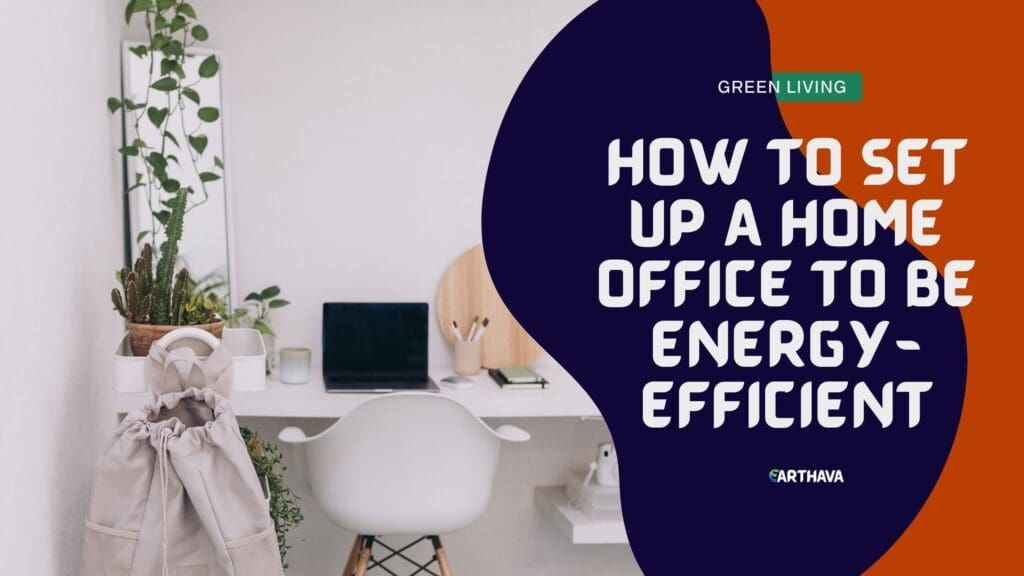While home offices have always existed in some form, they have become a lot more common lately. Some are used as a type of secondary office by those who need to do some work on days they aren’t usually present in the company’s office.

Another reason why home offices have grown in popularity in the last decade is that a rising number of individuals are now freelancing or operating an online business, which enables them to get work done without requiring a fixed location.
While home offices have a huge number of advantages, they do come with some drawbacks as well. One of them is energy consumption. If you have an office space in your home, you’ll use more energy, which can lead to higher electrical bills. The good news is that there are many things you can do to make an energy-efficient home office by reducing the amount of energy it uses. Here are some of them:
1. Choose Gadgets That Use Less Power
Any home office will need some electronic gadgets to function. To make yours more energy-efficient, try to choose equipment that uses as little power as possible. For example, a laptop computer uses less electricity than a desktop, in addition to having the advantage of being portable.
Using multi-purpose gadgets also saves power. A multifunction device combining a printer, scanner, phone, copier, and fax machine uses less electricity than having separate equipment for these functions. Another idea is to look for Energy Star-certified products when buying new office equipment, as they meet the latest standards for efficient use of energy.
2. Turn Off and Unplug Any Device You’re Not Using
One of the simplest ways to save power in your home office (and the rest of your home as well) is to turn off devices that you’re not currently using. If possible, you should also unplug them, as many of today’s electronic devices enter a type of “standby” mode that still draws some electricity even when they’re off.
3. Plug Your Devices into Power Strips
Using a power strip with multiple outlets is not only convenient but can also be helpful when you want to make your home office more energy-efficient. By plugging all your devices into a single power strip, you can turn them off all at once when you’re done working. Doing so will help ensure that devices that are off aren’t consuming “standby power.” While a device like a printer or computer monitor doesn’t use all that much power in standby mode, the savings can add up to over $100 a year if you completely unplug all of your devices.
4. Use Energy Saving Lighting Solutions
Advancements in lighting technology have made compact LED lights more widespread and affordable. They use a lot less power than traditional incandescent bulbs and even compact fluorescent lamps. While the savings will be small at first, even a few dollars a month saved on your electrical bill will add up to substantial savings over the years.
Another big plus of using LED lights is that they last a lot longer than other types of light bulbs. Some of the best ones on the market have an average lifespan of over two decades.
5. Consider Using Green Power
While this may not be an option if you rent your home or apartment, homeowners can cut down on their energy expenses by getting their power from green sources, like wind turbines or solar panels. Even though the equipment to generate your electricity from environmentally-friendly sources can cost several thousand dollars upfront, over time it has the potential to save you a huge amount of money on your electricity bills as your home uses less power from the grid.
6. Ensure That Your Workspace Is Properly Insulated
Poor insulation is one of the leading causes of wasted energy. To remedy this, you can place weather strips around your windows and doors. This can be done in your entire home, not just in your home office. Weather strips help seal small cracks around doors and windows. During the summer, this will make your air conditioning system work less hard to keep your home cool, thus saving electricity. When winter comes, it prevents heat from leaking outside.
7. Do Your System Update at Night
It’s better to leave certain computing tasks, such as extensive system updates or large downloads for the nighttime. This is because a computer that is working hard on an update will use more energy due to higher CPU and hard drive usage. Doing these updates overnight when you’re not working is a smart way of saving power.
8. Use Digital Documents Whenever Possible
Reducing the use of printed materials saves you power, as you won’t be using your printer as much. It also has some good environmental benefits, as you’re cutting down on the amount of paper you’re using. Whenever you can, use digital versions of documents and only print something if it’s necessary.
Many people now set up a home office. While working from home can be very convenient, it also makes you use more energy. The good news is that there are several things you can do to cut down on the amount of power your home office uses. Apply the tips mentioned above and you’ll be not only saving money on your energy bills but also helping the environment by reducing the amount of wasted energy.


